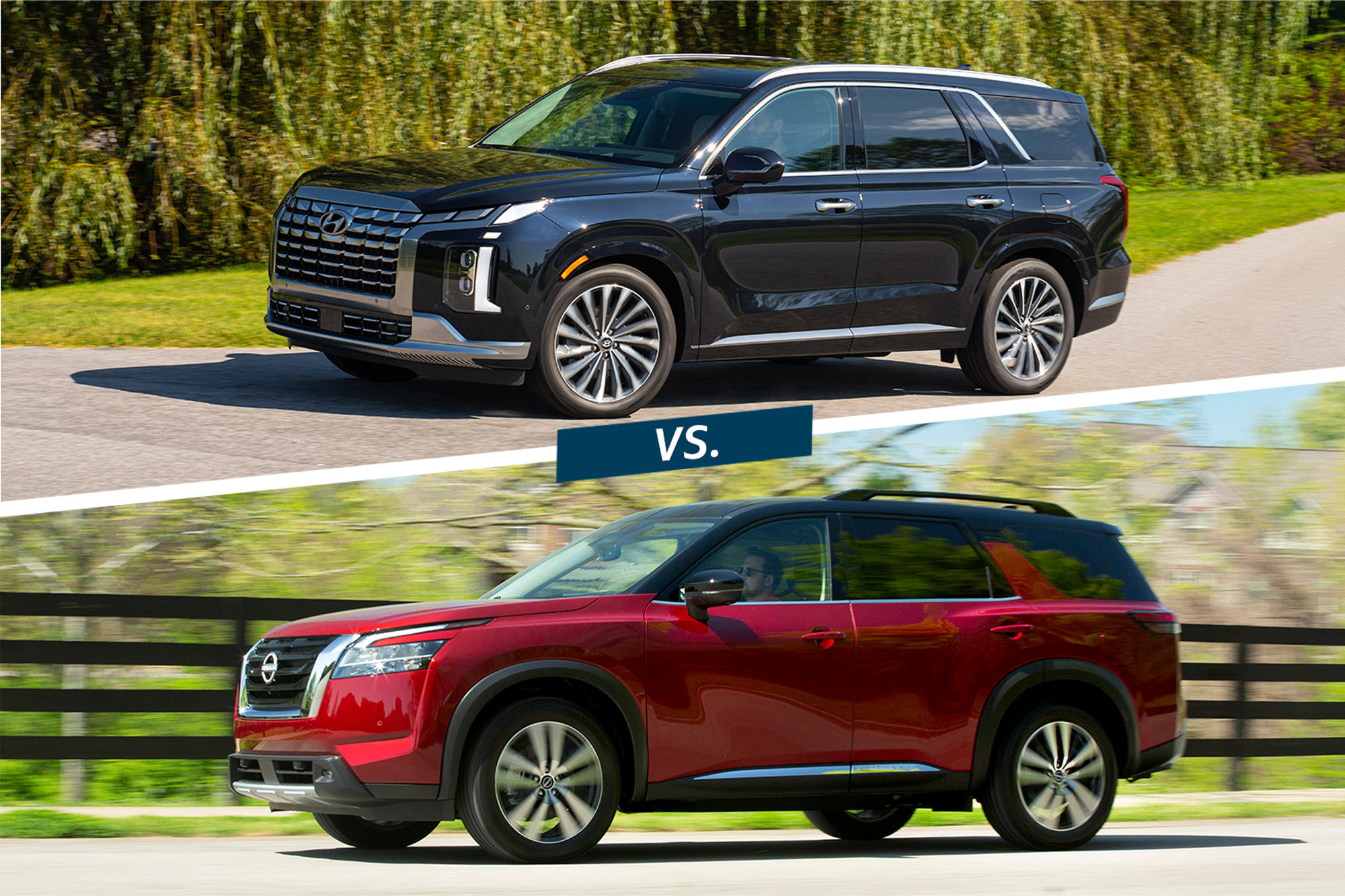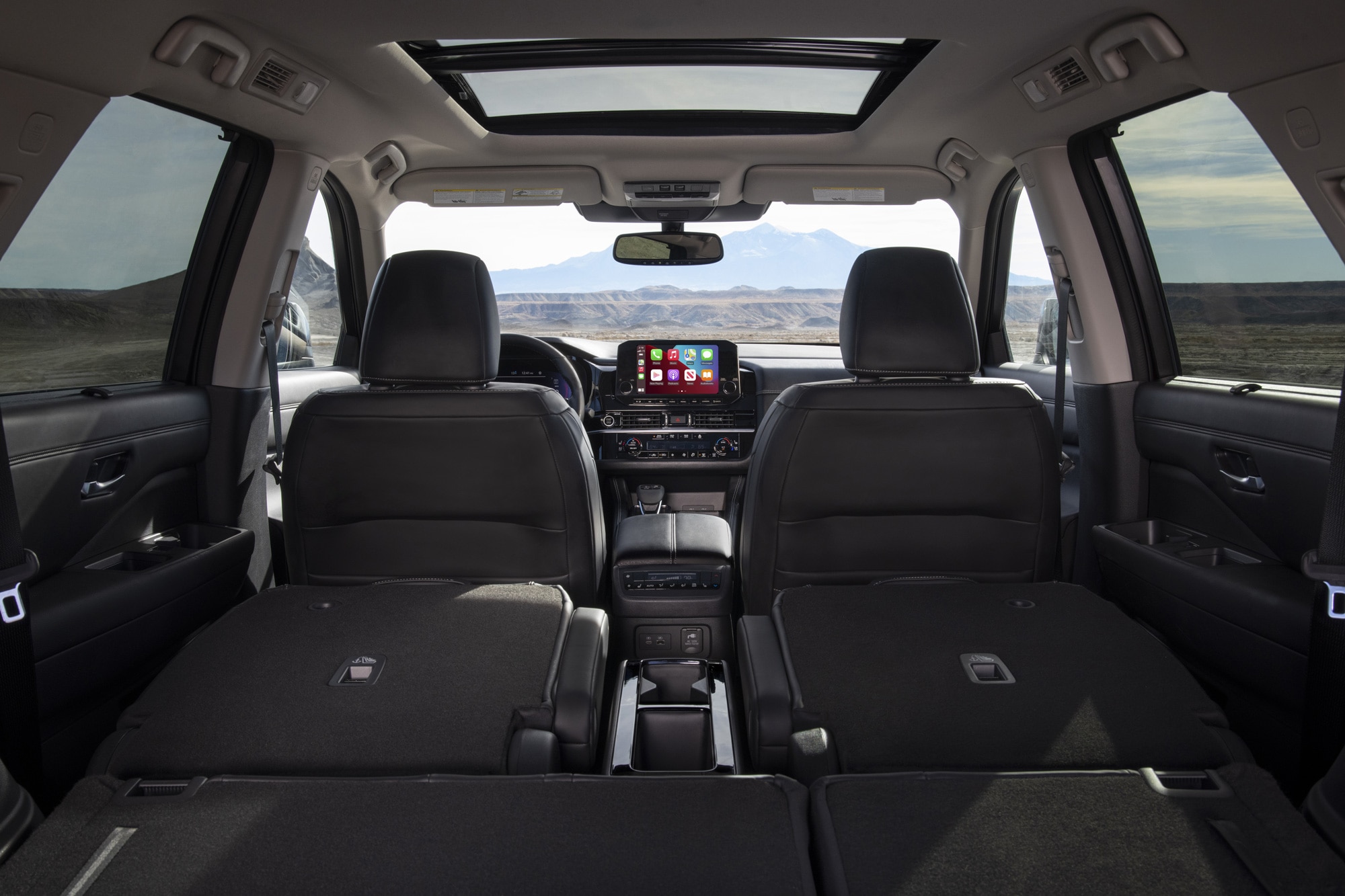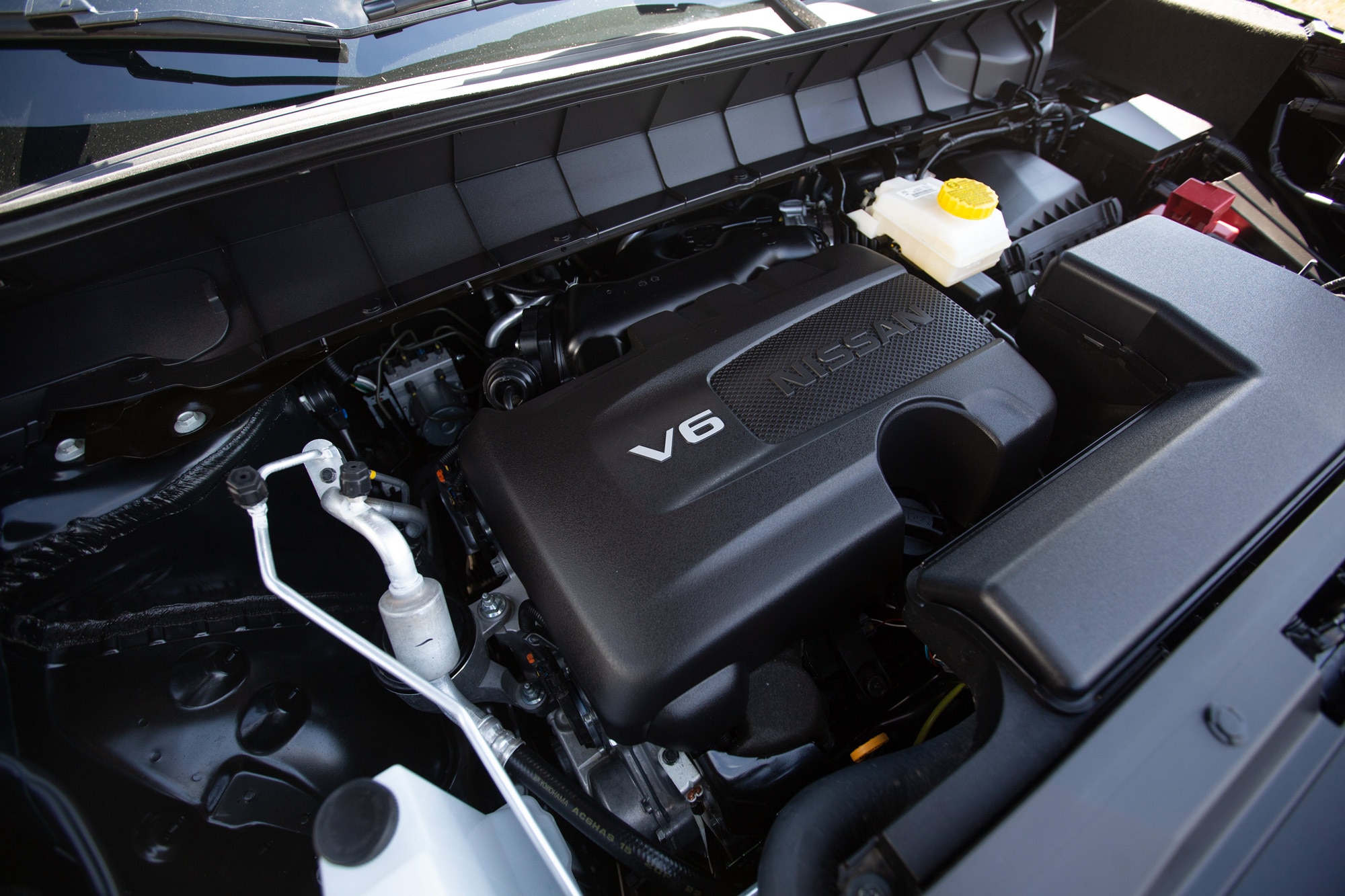Compared: 2023 Hyundai Palisade vs. 2023 Nissan Pathfinder
The Palisade gains ground in the three-row SUV segment with a comprehensive feature set.
 Hyundai | Nissan
Hyundai | Nissan
The Hyundai Palisade — the successor of the long-wheelbase Santa Fe XL in the U.S. — joined the midsize SUV class about five years ago and recently received a facelift. It now sports a truly massive grille, better tech, and a few more available luxuries than before.
The Nissan Pathfinder, is a couple of years into its fifth generation, yet despite its name recognition, it doesn't sell as well as the Palisade, perhaps because it comes up short in the feature department.
 Nissan
Nissan
The Hyundai Palisade and the Nissan Pathfinder Are Closely Matched in Price
The Palisade and Pathfinder have several things in common. Both seat seven or eight people, have a V6 under the hood, charge $1,900 extra for all-wheel drive (AWD), and begin their names with P. Base to base, the Hyundai costs marginally more — around $38,000 — than the Nissan — about $37,000 — but then its 3.8-liter six-cylinder makes 291 horsepower, besting the Pathfinder's 3.5-liter by 7 horsepower.
Only Nissan offers an off-roading special, though. It's called the Pathfinder Rock Creek, and it comes with AWD, a suspension lift, beadlock-style wheels, all-season tires, a tubular roof rack, a hitch receiver, and a 6,000-pound tow limit, an off-road mode for the surround-view camera, and orange stitching inside. It also makes 295 horsepower on premium gas. The closest thing to it in the Palisade lineup is the rugged-looking XRT trim level.
 Hyundai
Hyundai
The Palisade Bests the Pathfinder in Features
Hyundai has the edge here. Not only does the Palisade best the Pathfinder in passenger space — 155 cubic-feet to 149 cu-ft — it tops it in cargo volume, too — 18 cu-ft to 17 cu-ft — behind the third row. It comes standard with adaptive cruise control — something Nissan reserves for above-base trims — and a 12.3-inch infotainment screen. The Pathfinder makes do with a standard 8.0-inch or an available 9.0-inch display.
Both vehicles offer the usual amenities somewhere in their lineups. These include leather upholstery, a head-up display, rain-sensing wipers, a surround-view camera, heated second-row captain's chairs, and wireless phone charging. But only on the Hyundai's menu will shoppers find a massaging driver's seat, ventilation for the front row, and heating for the third row as well as a driver intercom.
As for the Nissan's advantages, they're few and far between. The base Pathfinder boasts a 7.0-inch display in the instrument panel, while the Palisade employs a 4.2-inch unit. Top models allow for wireless Apple CarPlay connectivity, whereas all Palisades require a cable. When properly equipped, the Nissan can tow up to 6,000 pounds — 1,000 pounds more than the Hyundai. Nissan's standard automatic climate-control system reaches three zones instead of Hyundai's two.
 Nissan
Nissan
The Pathfinder Bests the Palisade in Fuel Economy but Only Marginally
With combined EPA scores in the low 20s, neither of these vehicles is what you'd call efficient. The Palisade manages 19/27/22 mpg city/highway/combined when equipped with front-wheel drive and 19/25/21 mpg when both axles are in play.
The Pathfinder tops that, if only barely. The AWD version returns 21/27/23 mpg, FWD variant returns 20/27/23 mpg, while the top model — weighed down with more features — sees 20/25/22 mpg. The premium-drinking Rock Creek averages 20/23/21 mpg, returning the same combined mpg as the least-efficient Palisade.
All vehicle pricing includes MSRP plus destination charges (set at the time of publication), and will be rounded to the nearest thousand.
Written by humans.
Edited by humans.
 Beth Nichols
Beth NicholsAfter graduating from the University of Michigan, Beth Nichols stumbled into automotive journalism and found her footing, jumping between a few car magazines before going freelance. Her head, once full of useless facts about literature and art history, now holds useless facts about vehicles. She edits, checks, and occasionally creates content for Capital One, and though she understands it’s customary to write a bio in the third person, I don’t like it.
Related articles
View more related articles